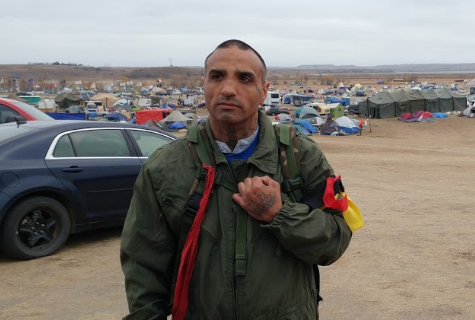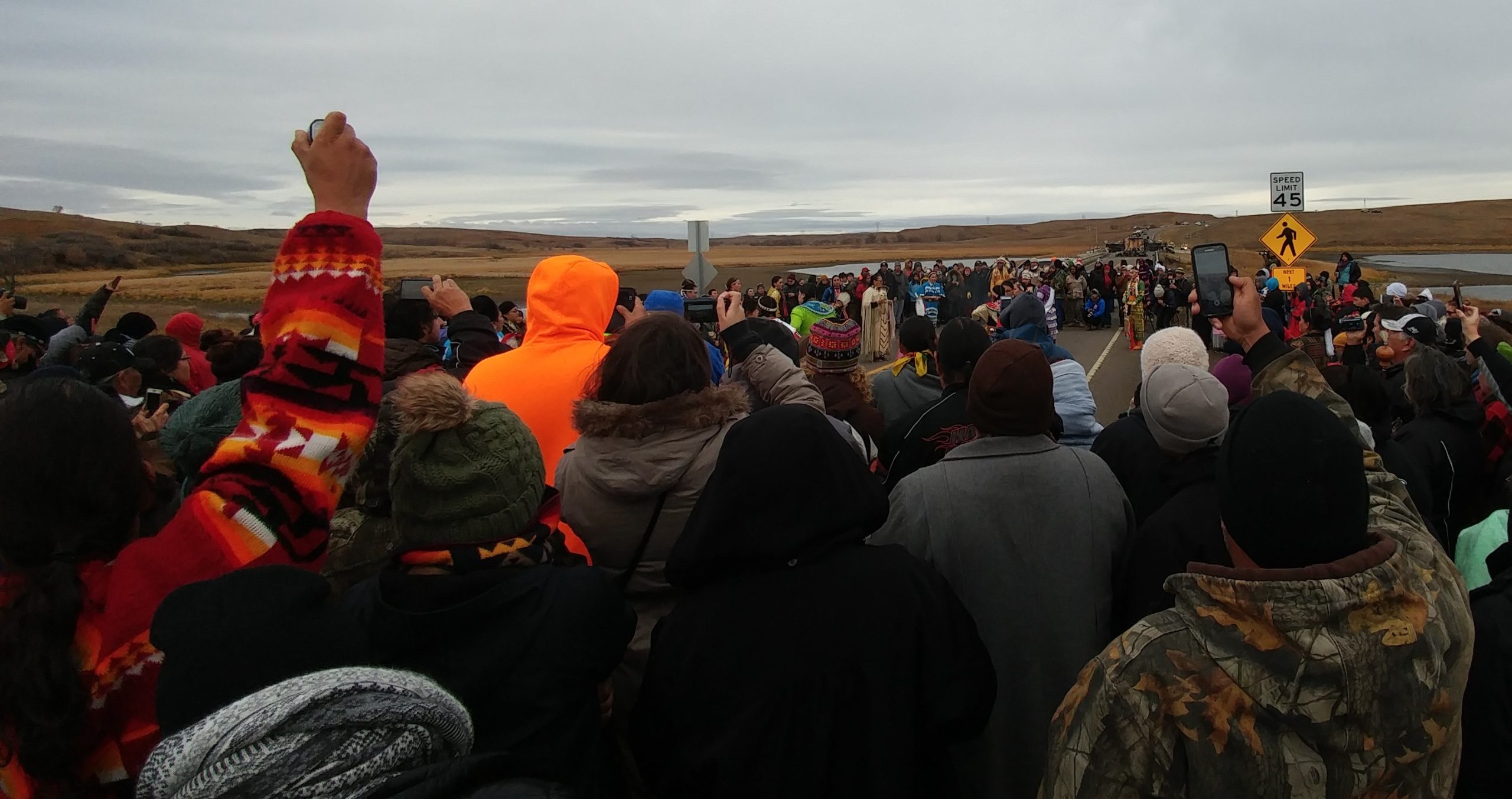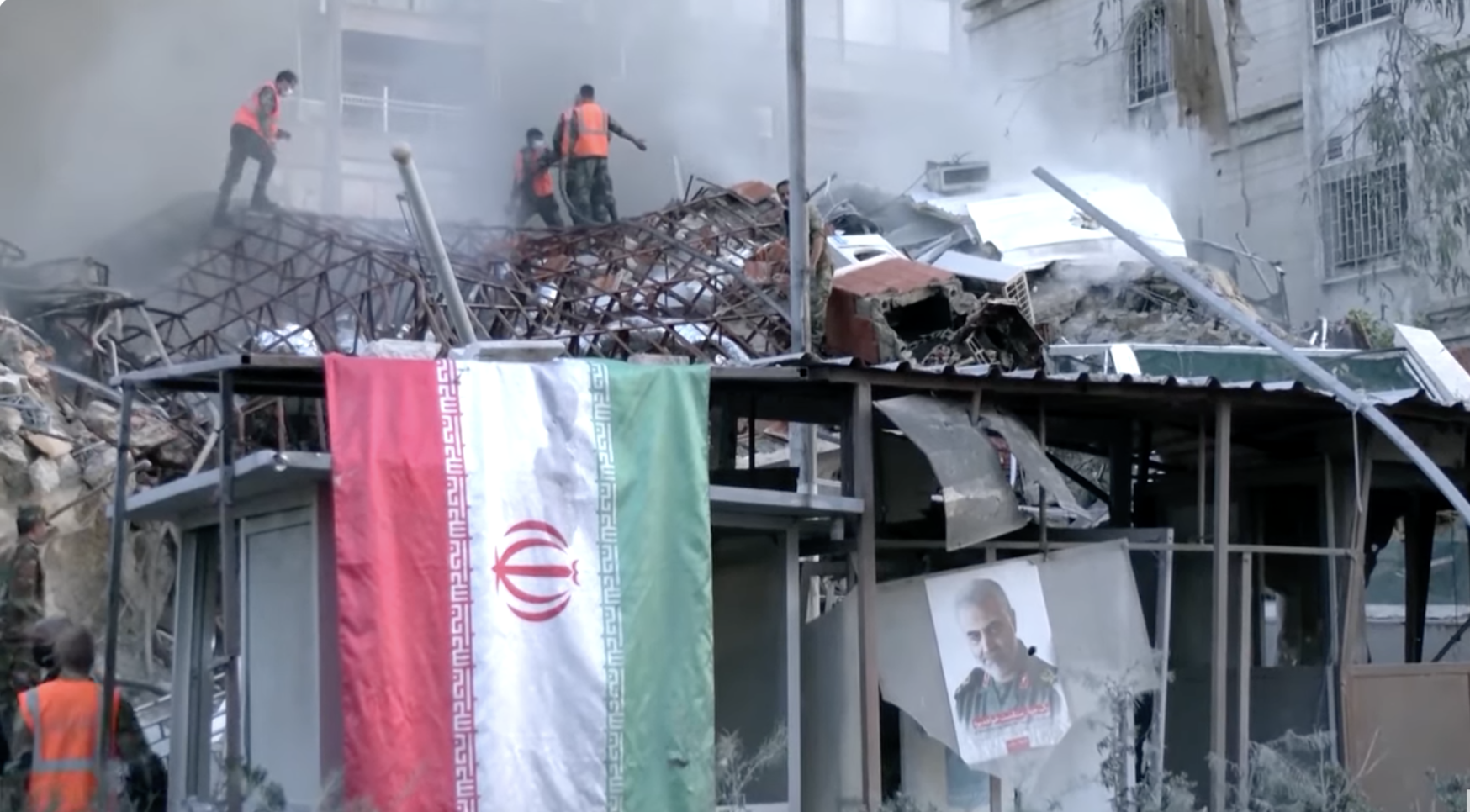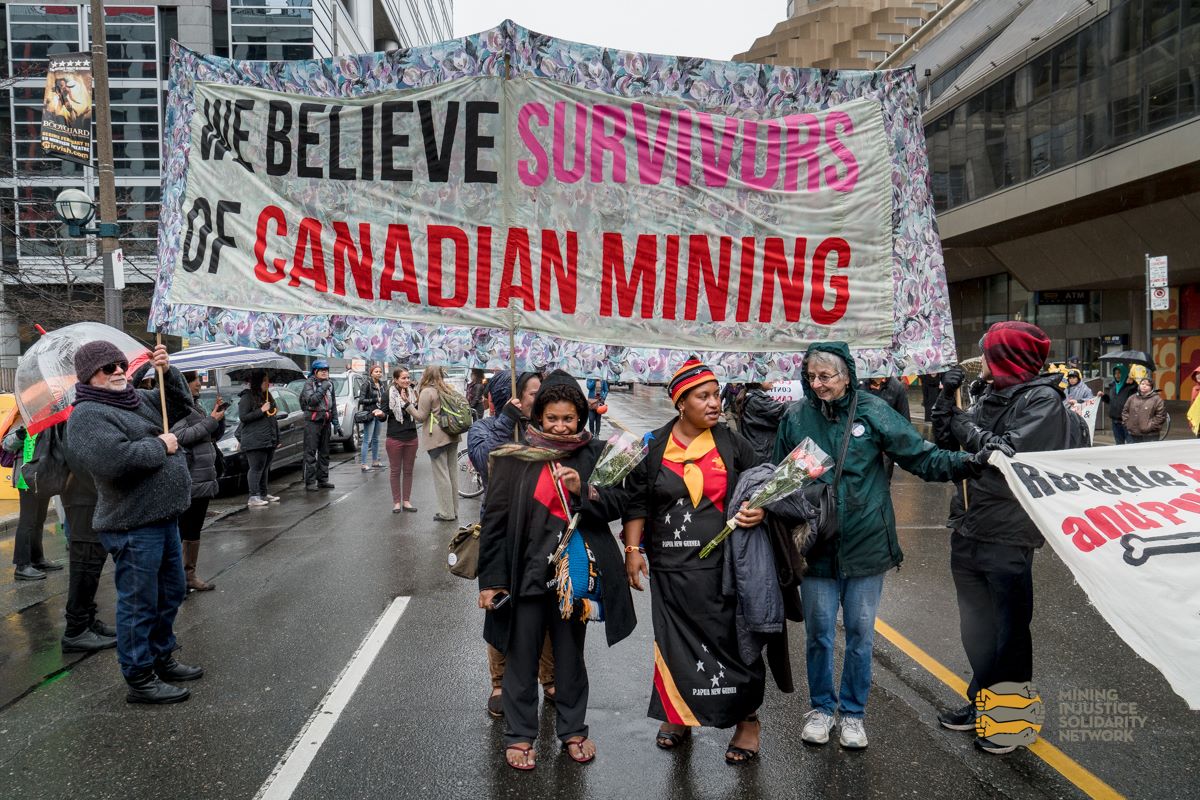“This is very important for us to be here to document their perspectives on what’s happening and to really see for ourselves these violations firsthand,” explained Roberto Borrero, member of the Taíno community and a UN Programs Consultant, in an interview with Ricochet Sunday evening at the camp.
“The Standing Rock Sioux Tribe, they are Indigenous peoples here in what we now know as the United States. They have treaties with the federal government, and they’re witnessing violations to that treaty.”
Members of the Standing Rock Sioux and their supporters, including elders and youth, were rounded up with the use of tear gas and rubber bullets by police officers in riot gear after a standoff on Thursday escalated.
The heavily militarized police operation involved more than 200 officers. Most protesters were charged with trespassing, arson, conspiracy to endanger by fire, rioting, and assaulting officers.
The majority of those arrested were released from various locations and jails across North Dakota on Sunday.
- West coast First Nations bring solidarity to Standing Rock pipeline battle
- Canadian banks fund Dakota Access pipeline companies: investigation
The water protectors — camp members use this term, rather than “protesters” — met observers from the United Nations Permanent Forum on Indigenous Issues including Borrero and Chief Edward John, a hereditary chief of the Tl’azt’en Nation in Northern B.C. These two Indigenous leaders, who are affiliated with the United Nations, are investigating human rights violations, treaty violations, and maltreatment of protesters at Standing Rock.

Ricochet spoke to a number of arrestees who said they were subjected to inhumane treatment and poor conditions while detained. Many now face what they say are trumped-up or inflated charges for their involvement in a non-violent land defence effort.
Little Feather, a member of the camp’s security team who was charged with rioting, said, “They put 30 people in one cage, and they had four cages, and they had us all sitting there with no shoes and no socks.”

According to Little Feather, the cages in the basement detention centre in Morton County were “like big dog kennels, about 10 feet by 15 feet.” He said he was not read his rights until he was in court two days after being detained.
Carol Masten, a Seminole and Sioux elder from Pennsylvania, was charged with conspiracy to endanger by fire, maintaining a public nuisance, and engaging in a riot. Masten told Ricochet she was thrown in solitary confinement after her arraignment.
“We were on concrete floors and they asked us, they didn’t ask us, they told us we had to strip down to one layer whatever that might be, and a lot of the ladies — I was fortunate, I had a sweater on, but a lot of the ladies were down to just a camisole top, and we were on the concrete floors for several hours.”

Masten and others claimed they were treated like cattle with numbers written on their arms. There are allegations of assault by police and the National Guard.
“I think it’s very emotional to be here to listen to some of these stories,” said Borrero, “and to see the lengths that the state government and law enforcement will go to, what seems to me, to protect the rights of a corporation over the rights of Indigenous peoples and other peoples, because it seems this issue is beyond Indigenous peoples.”
“It will affect anybody who is down the river and really I think it has broader connotations for the rights of peoples anywhere where they’re going to be facing projects like this.”

UN representatives are also speaking with Standing Rock Sioux’s members, the tribal government, and supporters in order to determine if the state or the corporation, Energy Transfer Partners, are violating the UN Declaration on the Rights of Indigenous Peoples and Standing Rock Sioux’s treaty with the federal government. UNDRIP, which was endorsed by the Obama administration in 2010, outlines and acknowledges Indigenous rigths, title and protections.
Borrero and Grand Chief John are not the only outside observers who have made their way to Standing Rock in recent days. On Saturday, representatives from Amnesty International arrived, joining various marches and prayers on the front line, in order to observe the behaviour of police and the National Guard.





